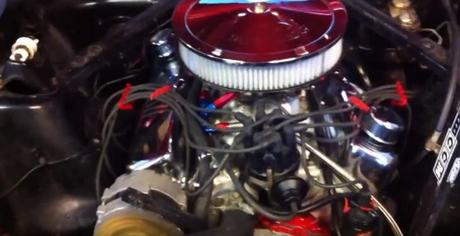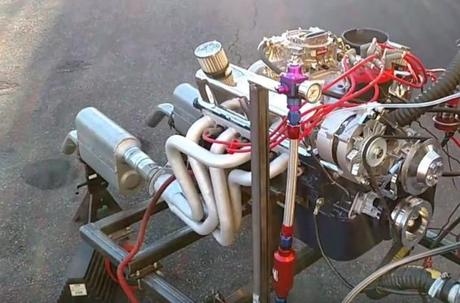A 331 Stroker engine is an upgraded Ford 302 or 289 engine that has not reached 347. Yup, on the way to a 347 Stroker comes the 331 Stroker, its simple math's see.

So why stop at a 331?
A 331 Stroker has better oil consumption and lasts longer than the 347, and the base or core 289 and 302 are still big enough to fit into an early Mustang, Falcon, and Fairlane without having to make some serious engine compartment changes.
A 331ci engine will give you 400 hp and 400 lbs-ft of torque. Now horsepower isn't complicated science, all you do is multiply torque and rpm, and divide the result by 5,252. Now it's no secret that the more powerful a small engine, the faster the vehicle will be, simply because the block is lighter, and the driver doesn't need to push as much engine weight with the rest of the car.

With all this, the 331 still remains less popular as a choice for drivers that love large numbers, such as 347.
Now let's take a practical look at how to make an improved 331 model.
Take a 289 or 302 Ford engine block and remove all the freeze and oil galley plugs. Next, remove the cam bearings and then hot-tank and jet-clean the block. After this, you check for core shift by looking at the lifter bores. If you see an offset, don't use this block.

Now you magnaflux the block to check for cracks and casting flaws, then deburr all the sharp edges in the block casting, and remember to do this both inside and outside. You also remove all the internal sand cavities and tap all the front oil galleys checking to see if there are screw-in galley plugs.
The next step is to radius the lifter-valley oil drain holes and install oil drain-back screens. You must also chamfer the oil filter-station passages.
For an easier build, you should use bottom taps to chase all the bolt-hole threads and follow through by chamfering and radius all the holes. Do not install a lifter galley restrictor if you are going to run a hydraulic camshaft, otherwise, tap the main journals 2 through 5 only in the crankshaft-to-camshaft oil galley passages.
Mill the block-decks to be parallel to each other and flat within .002-inch in any 6-inch direction, as well as having an equal distance to the centerline of the crankshaft. You will also want to install the main caps and torque to specifications, and then you reach the bores.
Bore the cylinders to 4.025 inches, then hone them micro-smooth to either 4.030-inches for racing, or 4.040 inches for street use.
Now line-hone the main bearing saddles and clean all the passages, then visually inspect them. It's time to jet-clean the block and check for clean passages again. After which you can install the solid steel shell cam bearings, and prefit the camshaft so you can check for smooth rotation. If the cam moves smoothly, install the restrictor kit to camshaft bearings and seal it with high-temp Loctite.
Now install all of the oil galley plugs and then drill the passenger-side oil-galley plug .020-inch for timing-chain lubrication. After this, install the plug in the block. Now you can install the camshaft rear-bearing plug and finally coat all the non-machined, rough, internal surfaces with an oil/acid-resistant paint.
Just for extra security, dimple both the manifold and block intake endrails with a center punch, this helps retain the end gaskets. You can now install the oil-filter adaptor fitting.
All done.
Conclusions
The 331 is actually as popular as the 347 today, mainly because it has a better rod ratio and is a lighter assembly that delivers higher rpm. While the 347 does pump pout some impressive torque, it is not a high rev engine, and the 331 will give you more torque with higher revs than the 289 and 302.
The bottom line is that the 331 is a great middle ground engine that gives you all the additional power without the wastefulness of a 347.
